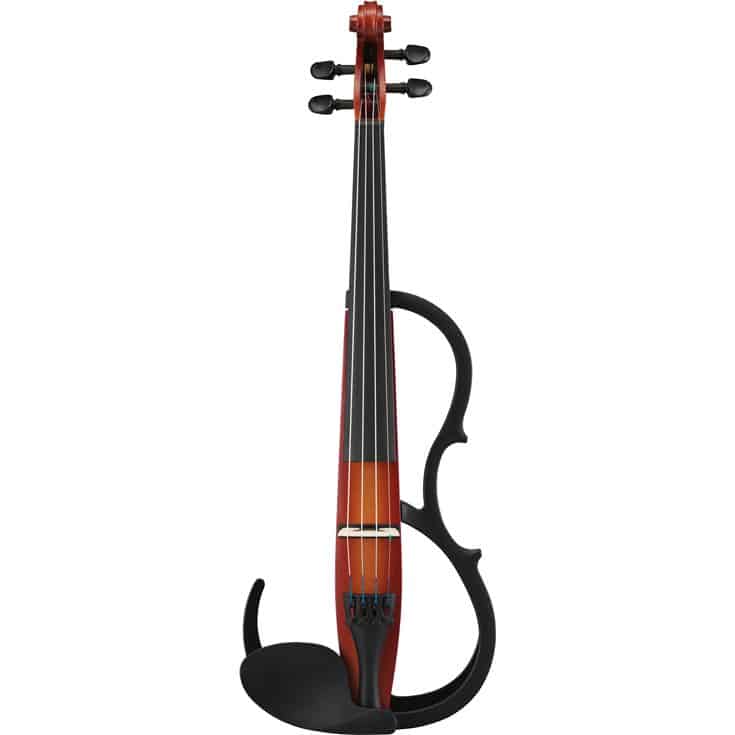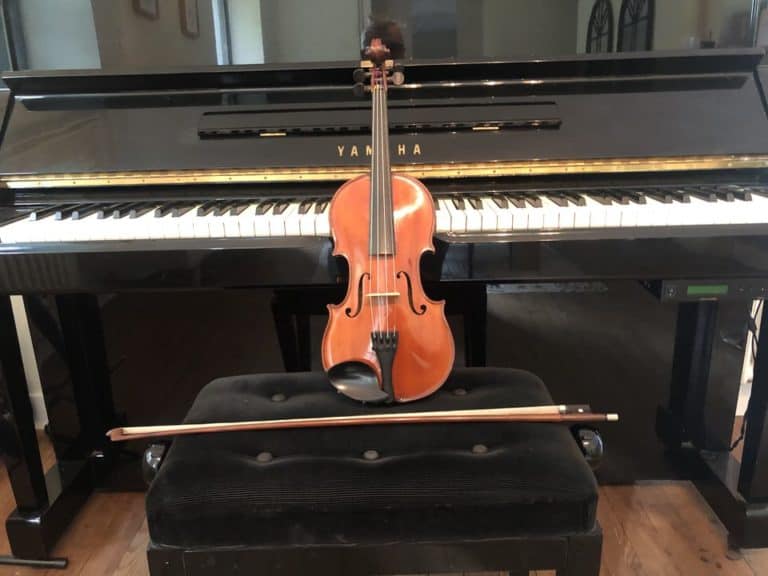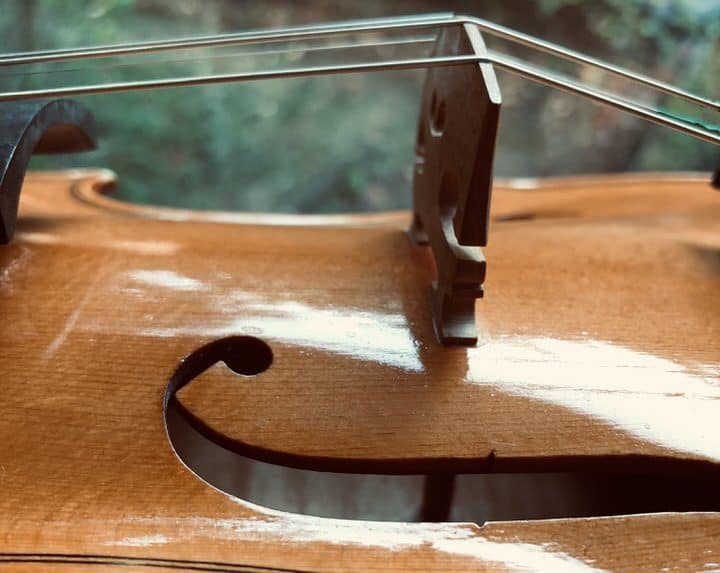Are Electric Violins Expensive? You Will Be Surprised
Violins are known to be magical instruments with prices reaching every year new heights. But it is a completely different story with electric violins. Have electric violins commoditized the price of those instruments? By being build in factories and in mass production, they certainly have. The revolution that happened with the guitar (Fender Stratocaster for example) has happened to the violin also. Even if electric violins are less iconic, maybe, shapes like the Silent electric violin from Yamaha are known around the world. And those violins are more affordable than ever.
An electric violin starts at $150 but don’t expect top quality, a good one from a trusted brand such as Yamaha costs from $600 to $900. An original piece from a maker starts at $1500 to $4000. But don’t forget the price of an amplifier: a correct one to practice usually starts around $80.
Even for electric violins, there are things to consider when choosing an instrument. And if prices differ, there are characteristics you shouldn’t compromise on. Electric violins are not just a way to start cheaper, I think.
| Price | Pros | Cons | Note |
|---|---|---|---|
| $150+ | Cheap, correct sound, complete package | Mediocre build quality, several upgrades if you intend to play a lot | For beginners or very occasional use, generic brands |
| $600-$1000 | Good build quality, good sound | There is no pack | Trusted brands, good investment, will last long, good value for money |
| 1500+ | Exceptionnel build quality, good sound | still need upgrades to have a great sound | you will play them for hours, and enjoy them for a long time, they have resale value |
Why are electric violins cheaper than acoustic ones?
Classical and acoustic violins are usually unique pieces of art. Later, shops have created a serial production that has brought the price down. It was not a mass production per se, yet. The French factory of Mirecourt, in the 19th century, for example, was one of those who pioneered violin production in series. More and more people could afford a violin in a time where these instruments were expensive.
Electric violins are not made as a unique piece by a luthier: they are generally made in factories. In that regard, the sound and its uniqueness are not due only to rare woods and varnishes: electronics play a great part in the tone of an electric violin. All Yamaha violins of the same type have more or less the same sound. Electronics have become a commodity and don’t cost much anymore. Machines can make those instruments. That is why the price of electric violins has nothing to do with old acoustic instruments.
The last thing that allowed to bring the price down is the success of those instruments. Even if it is debatable, see our other post on that subject (link!!!), electric violins are an easier way to start. They allow many beginners to practice in environments where a loud acoustic violin wouldn’t be just possible. Lastly, they allow playing different styles of music in bigger venues. All in one, many people are interested every year to buy an electric violin. Some as a complement to their acoustic violin, and not as their only instrument. That is exactly what I did. When I was playing clubs in London, I could practice in my condo, record samples at home, and just arrive and plug in the pre-amp of the sound system of the club. Rather easy.
An electric violin starts at around $150
Violins under $500 will come as a set with a bow, a case, an auxiliary cable, headphone, and rosin. This is a beginner pack and, as such, every accessory is of mediocre quality at best. It allows you or the kid you give it to start off straight away. But if you want to play longer and enjoy playing, you will have to use a good bow, change strings, use good rosin, a good jack, and decent headphones. That is to say, you need to upgrade everything except for the violin. But this is an easy way to start, though, without spending too much money on something you are not sure to enjoy. So, why not?
A toddler who might or might not want to go on playing, or a classical violinist who has just had a baby and wants to practice in silence for a couple of months: there are many cases when these violins can be helpful.
Cecilio Electric Violin: recommended by Amazon
At around $150 (check the latest price on Amazon), can we expect much from this violin?
This violin is from Cecilio, not a very known brand. It is of course made in China with an Italian-like rebrand. It comes with a light case, and as a complete package with a bow, rosin, cable, and headphones.
It is made of maple wood with an ebony fingerboard. These woods again are alright if we think of the price.
On the plus side, it comes in different colors: mahogany, maple, white, blue, black. Each color is made out of the same wood (maple). The shape itself resembles the original Yamaha Silent violin, which is not a bad thing.
On the electronic side, you have a knob for volume, tone, and line out, mic and headphones, again like my silent violin. It has an active behavior with a 9v battery pre-amp.
The output is 1/8th output jack with an adapter to 1/4th to be plugged into any guitar amp.
It is already set up: you don’t have to put on the strings yourself when you receive the instrument from the factory or retailer. The strings and bridge are of ok quality for the price. The pegs didn’t stick very well when I tried. But by turning them inside, they eventually stayed in tune. I was careful when tuning the violin and that was enough.
The sound is quite good for the price. But there are no miracles: don’t expect the bow to be of any good quality. If you plan to play that violin as a complement to another violin, unless you are a beginner, use your usual bow and rosin on it, otherwise, you might be disappointed. This violin is ok for occasional use. If you want better results, change the strings to dominant by Thomastik Infeld. That, with a good bow, you won’t be deceived if you ditch the included headphones for better ones as well. The build quality is not good; it is ok for the price.
This violin can be enough for starters or for occasional use. If you intend to play more, see below you won’t regret it.
A good electric violin ranges from $500 to $1000
NS Design WAV
The price of this instrument has fallen down recently on Amazon.
In that price range, electric violins start to be true instruments. And, as such, they don’t come automatically with a bow, rosin, and so on. When you buy a great Gibson guitar, the amp is not included in a pack. This is the same here. The build quality is good, you will enjoy manipulating and holding these violins in your hands.
This is better quality overall. At around $700, this electric violin can be played without fear. The maple top is gorgeous and the fingerboard is made of ebony. The rest of the violin is maple. I have included this violin as an example of violins between $500 and $1000 that aren’t Yamaha’s. The NS design brand makes violins with 4 to 5 strings, and with the particularity of a more modern look.
This NS design instrument comes in several colors, the classic black, red, and amber burst.
This model’s particularities are its lack of pegbox and the position of the chinrest. The shoulder rest is attached to the violin. This stick-like shape is very well made and looks great for an electric violin.
There is a small piece of plastic that gives a mark to the left hand used to rest on the body of the violin, starting at the third position.
The electronics are of good quality, with a 1/4th output jack this time, allowing to plug the violin into any guitar amp without an adaptor. The electronics are passive without the need for a battery. The pick-up is piezo-electric with great clarity, focus, and precision of the sound. The strings are easily clamped (where the pegbox used to be) and the fine-tuners work as expected. They are of good quality as well.
The violin is quiet, though maybe not as much as the Yamaha silent violin. But it doesn’t come with a headphone jack! This might be something to consider if you plan to practice with a headphone.
This violin doesn’t come in with a pack. This is not intended to be beginner’s violin. You need to use your own bow, rosin, jack, and so on, which seems normal for me. Bows are not an accessory for violins, they are a complete instrument…
Soundwise, there is no comparison between this $700 violin and the under-$500 I have listed. It has a good sound that you will spend a lot of time enjoying. It is smooth as silk. It is a great entry-level model of this brand and gives a good taste of the rest of the more expensive range.
This other obvious choice that I won’t detail here is the Yamaha electric range of violins. They provide exceptional value and have their own article on this site.
Exceptional electric violins cost north of $1500
At more than $1500, electric violins have great build qualities.
For example, the Yamaha SV-255 Silent Violin has a great build quality, (the price was a bit cheaper last time I checked) is made of ebony for the fingerboard, chinrest, and even pegs. The top is made of spruce, a good choice of wood once again, that inspires quality and beautiful “craftsmanship”.
The sound is precise, warm, and mellow, with a high end not too bright. As with good acoustic violins, you might want to experiment with the strings you prefer on that violin. The playability is exceptional and you can bring it to any gig while being able to practice at home in a quiet, if not silent, environment. It is part of the silent violin Yamaha family, after all.
Interestingly enough, this 5-string violin comes with a pre-amplifier box that has to be used to get the most out of this instrument.
The shape of the instrument is very comfortable for the left hand reaching the high positions.
Don’t forget the price of the amplifier and accessories
If you buy your first electric violin, you might need to buy an amplifier. Even if your violin comes in a pack with headphones, a cable, and so on, chances are you will need an amplifier if you want to hear your violin other than with your headphones. So this is something you have to consider.
- A good jack starts at $10 for acceptable quality, such as this one which comes handy with a right angle,
- and, if needed, a jack adapter 1/4 to 1/8 with some wire to prevent damages such as this one,
- a correct amplifier of a trusted brand, for example this one on Amazon from Fender, starts at $80
So the true price of your electric journey is now known, you might have to add the $80 amplifier to the $150, $700, or $1800 of your violin.
The gear and products I use and recommend for my electric violin
First, If you want to hear your electric violin, you need to either use headphones, plug it into an amp, or an audio interface.
The small amp I use and recommend if you want to practice at home is the great Yamaha THR10 from the THR series. It is portable and not expensive, easy to use and set up.
If you want to record yourself or plug your violin into headphones, your laptop, or your phone, a good and cheap digital audio interface I can recommend is the iRig HD2, which is more and more affordable on Amazon.
I typically use Thomastik Dominant strings on my electric violin. They come quite cheap on Amazon considering their quality and sound. Synthetic core strings work well on Yamaha electric violins.
Lastly, I use mainly Dominant rosin as well on my electric violin, as it has been designed to go with Dominant Strings.
You can check out in detail all the stuff I have tested and used on my recommended product page where I go into more details.


















